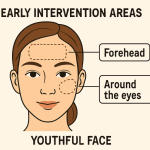What Preventive Dental Care Means
Preventive dental care revolves around stopping minor oral health problems from becoming major issues. At its core, this type of care includes daily brushing and flossing, fluoride toothpaste, and visiting the best cosmetic dentist in las vegas regularly. Interestingly, even minor lapses—such as skipping routine cleanings or ignoring bleeding gums—can allow simple dental issues to turn into painful and costly conditions. According to the Centers for Disease Control and Prevention (CDC), tooth decay remains one of the most common chronic conditions, affecting 1 in 4 adults and nearly half of adolescents aged 12 to 19. Still, most dental diseases are avoidable with good habits and timely professional support.
Accessible dental care lays the groundwork for prevention, and many people rely on HMO plans to help manage costs for routine checkups, cleanings, and preventive procedures. When preventive services are built into coverage, individuals have more confidence to seek proactive care, ultimately catching problems early before they progress. Many plans also offer no-cost cleanings and exams, making sticking to good habits practical and affordable. Simple steps today can lead to a lifetime of better oral health and fewer dental emergencies.
Dental Insurance and Preventive Visits
Dental insurance plays a significant role in helping people access preventive care. Many dental plans, including coverage through workplaces or independent HMO plans, prioritize prevention because stopping issues before they start is more cost-effective. People with dental coverage are more likely to receive regular cleanings, x-rays, and oral exams, all of which detect early signs of cavities, gum problems, or other oral conditions. The peace of mind that comes with knowing preventive care is covered helps families stay consistent with their routines.
Insurance coverage also levels the playing field, helping more people access professional treatment regardless of income. For those without coverage, some dental offices and community health clinics offer discounted preventive services or participate in public health programs. Routine professional care—ideally every six months- no matter the payment method—sets the standard for long-term oral health.
Building Strong Habits From Childhood
Childhood provides a unique window of opportunity to form lasting dental hygiene routines. Teaching children to brush for two minutes twice a day and floss at least once daily can develop into lifelong habits with enormous benefits. Most preschoolers respond well when dental care is presented as fun and rewarding. Caregivers can lead by example—young children are more likely to adopt regular brushing and flossing routines when they see adults doing it, too.
Encouraging Positive Behaviors Early
- Make brushing a family activity, and model good technique
- Choose toothbrushes and toothpaste with colors or characters your child loves
- Use sticker charts, songs, or small non-food rewards for positive reinforcement
According to leading pediatric dentists, regular dental visits should start early, by the child’s first birthday. Schools sometimes provide dental screenings and fluoride varnishes, especially where access to care is limited. Children who learn that dental visits are everyday, positive experiences are more likely to continue routine care as teenagers and adults. These early lessons build confidence and reduce anxiety about dental appointments throughout life.
The Role of Diet in Oral Health
Nutrition and dental health are more closely linked than many people realize. Foods high in sugar and acidic drinks can erode enamel and feed harmful bacteria in the mouth, making cavities and gum disease more likely. Conversely, fiber, calcium, and vitamin-rich meals support strong teeth and healthy gums. For instance, crunchy vegetables and crisp fruits such as apples help scrub the surfaces of teeth while stimulating saliva flow, naturally neutralizing acids.
- Swap sugary snacks for options like cheese, yogurt, celery, and almonds
- Drink water after meals and snacks, especially if brushing isn’t convenient
- Limit frequent sipping or snacking throughout the day, which increases cavity risk
Making small, mindful choices—choosing water or milk instead of soda, and keeping nutritious snacks handy—protects your teeth at every age. Good nutrition and regular cleaning create a powerful robustness against decay.
Why Regular Checkups Matter
Regular dental visits serve more than cosmetic purposes; they’re critical for identifying potential problems before they become serious. At Smiles Orthodontic Practice in Strathfield, patients receive comprehensive care that goes beyond aesthetics, ensuring both oral health and overall wellbeing. Most dental professionals recommend visiting every six months, although people with certain conditions may need more frequent monitoring. According to Harvard Health Publishing, checkups not only catch cavities and gum disease early but also allow for oral cancer screening and signs of systemic diseases, which sometimes show symptoms in the mouth first.
Even for those diligent with home care, dentists and hygienists can reach areas that toothbrushes and floss cannot. Professional cleanings remove tartar and biofilm, reducing the risk of gum inflammation and infection. After a visit, many people feel freshly motivated to keep up good habits, thanks to tailored guidance and the fresh, clean feeling a professional cleaning provides. Skipping checkups allows minor issues to develop and can lead to more invasive and expensive treatments.
What To Expect During a Checkup
- A comprehensive cleaning by a hygienist
- Assessment of gum health and pocket depth
- X-rays to spot cavities between teeth and below the gumline
- Discussion of daily habits and recommendations for improvement
Addressing Barriers to Preventive Care
Not everyone finds it easy to access or prioritize dental care. Factors like cost, lack of transportation, or dental anxiety often lead people to put off routine visits. Surveys show that nearly one in three adults avoids the dentist due to financial concerns. Dentists today are increasingly sensitive to these challenges, offering flexible hours, payment plans, and anxiety-reducing techniques.
- Gentle “fear-free” dentistry, sedation, and open communication with the dental team
- Mobile clinics, school-based programs, and sliding scale fees make care more accessible.
- Community outreach, education, and clear communication help overcome stigma and fear. Addressing these barriers through education and support can make dental care feel approachable for everyone, resulting in more consistent preventive care and a healthier community overall.
The Link Between Oral and Overall Health
Dental health isn’t separate from the rest of the body—it’s deeply interconnected. Research continues to reaffirm that bacteria from gum disease can enter the bloodstream, contributing to systemic inflammation and increasing the risk for heart disease, diabetes complications, and even pregnancy problems. Inflammation in the mouth can signal widespread issues elsewhere, so changes in gum tissue or oral discomfort can be the first sign of medical conditions.
Proactive oral care lowers the risk of secondary health concerns and improves quality of life. For example, people with diabetes who practice diligent oral care often experience better blood sugar management. Dentists and physicians frequently collaborate to address these overlaps, ensuring that preventive dental care supports whole-body wellness.






